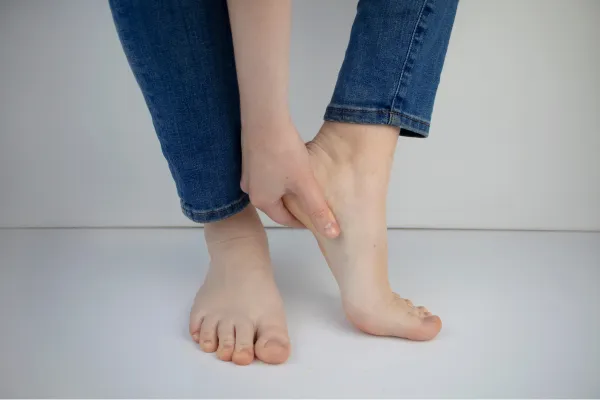Tips & Advice From West Haven Foot and Ankle Center

Cracking the Heel Pain Code: Causes, Symptoms & Anatomy Explained
Heel pain is a common complaint that can significantly impact your daily life. That sharp sting or dull ache can make even simple activities like walking or standing a chore. But what exactly causes heel pain? Here at West Haven Foot and Ankle, we understand the frustration associated with this condition. That's why we're dedicated to providing you with a comprehensive overview of heel pain, from its anatomy to its various causes and symptoms.
The Foundation of Your Step: Understanding Heel Anatomy
Before we explore the reasons behind heel pain, let's take a closer look at the intricate structure of your heel. The heel bone, also known as the calcaneus, is the largest bone in your foot. It acts as the foundation for your entire body weight when you stand or walk. Several important structures work together in this crucial area:
Plantar fascia: This thick band of tissue stretches from your heel to your toes, supporting the arch of your foot and absorbing shock during movement.
Achilles tendon: This powerful tendon connects your calf muscles to your heel bone, allowing you to push off the ground when walking or running.
Bursa: These fluid-filled sacs cushion the bones, tendons, and muscles around your heel, preventing friction.
The Culprits Behind the Ache: Common Causes of Heel Pain
Several factors can contribute to heel pain, each affecting different parts of your heel anatomy. Here are some of the most common culprits:
Plantar fasciitis: This inflammation of the plantar fascia is a frequent cause of heel pain, often characterized by a stabbing pain in the morning or after long periods of standing.
Achilles tendinitis: Inflammation of the Achilles tendon can cause pain and stiffness in the back of your heel, especially when pushing off during activity.
Heel bursitis: Inflammation of the bursa around your heel can lead to pain and tenderness, particularly when putting pressure on the affected area.
Heel spur: A bony protrusion on the underside of your heel bone can irritate surrounding tissues, causing pain and discomfort.
Arthritis: Degenerative changes in the joints of your foot can lead to pain and stiffness in your heel.
Stress fractures: Tiny cracks in the heel bone can occur due to repetitive stress, often seen in athletes.
Recognizing the Signs: Symptoms of Heel Pain
The symptoms of heel pain can vary depending on the underlying cause. However, some common signs include:
Sharp pain or dull ache in your heel, especially in the morning or after prolonged activity.
Tenderness and swelling around your heel.
Difficulty walking, standing, or climbing stairs.
Stiffness in your heel, particularly noticeable when first getting up in the morning.
Don't Walk in Pain! Schedule an Appointment Today
If you're experiencing heel pain, it's important to seek professional evaluation. Here at West Haven Foot and Ankle, our podiatrists will conduct a thorough examination to identify the source of your pain and recommend the most effective treatment plan to get you back on your feet comfortably.
Remember, understanding heel pain empowers you to take control of your foot health. In our next blog post, we'll delve deeper into diagnosing and treating heel pain. Stay tuned!
Ask West Haven Foot and Ankle Center And Their Team
Fill in the form to request a call from our team. One of our team members will call you for FREE and answer any questions or concerns you may have about your condition
Where To Find West Haven Foot and Ankle Center

If you have any questions before scheduling an appointment or for general inquiries, please use the contact us button below. Our team will promptly reach out to assist you.
Opening Hours
Monday: 8am - 5pm
Tuesday: 8am - 5pm
Wednesday: Closed
Thursday: 8am - 5pm
Friday: 8am - 5pm
Saturday: Closed
Sunday: Closed

